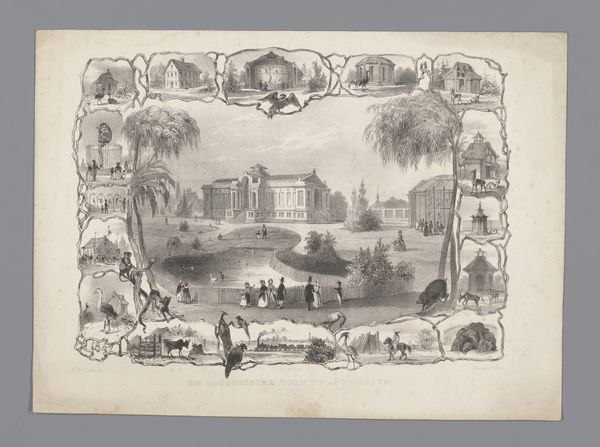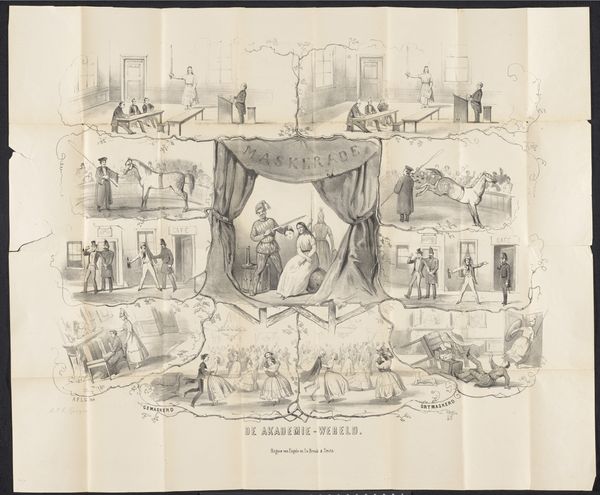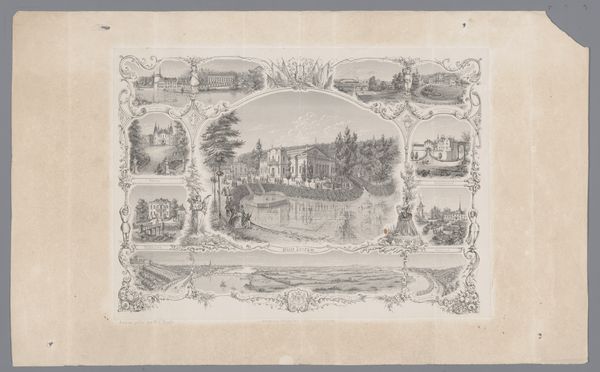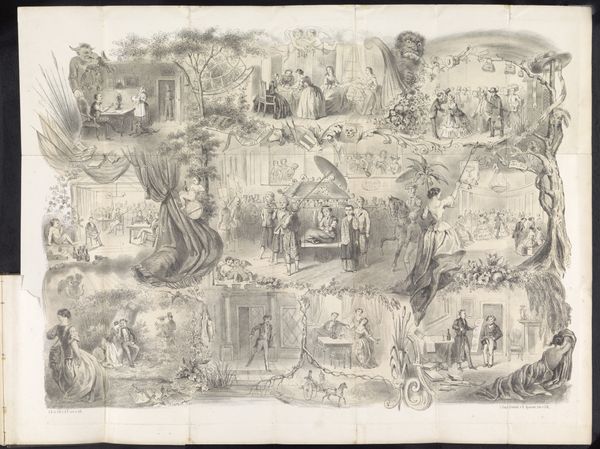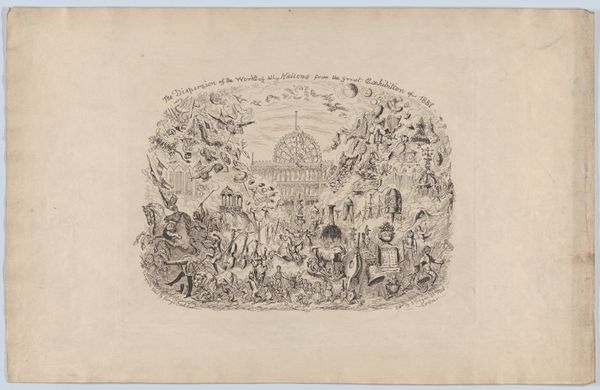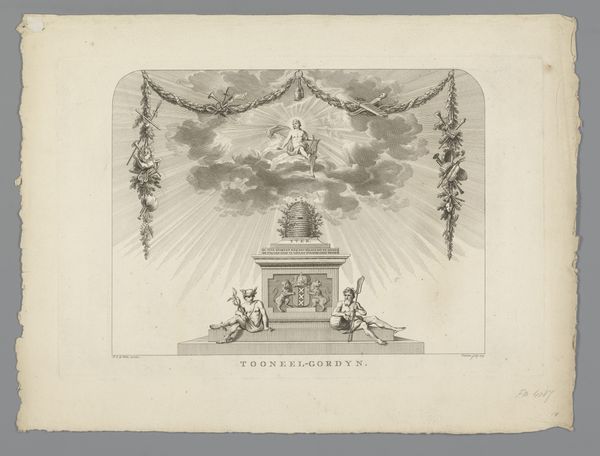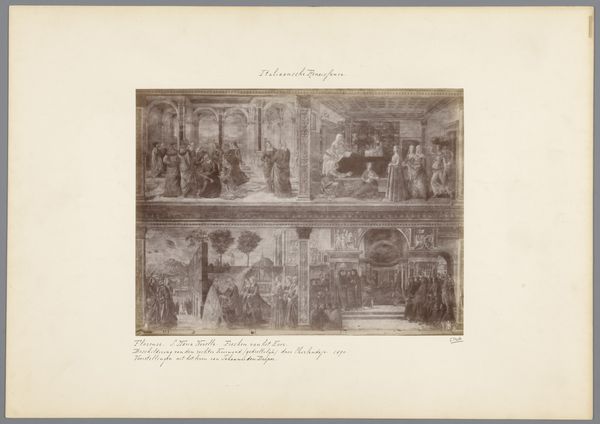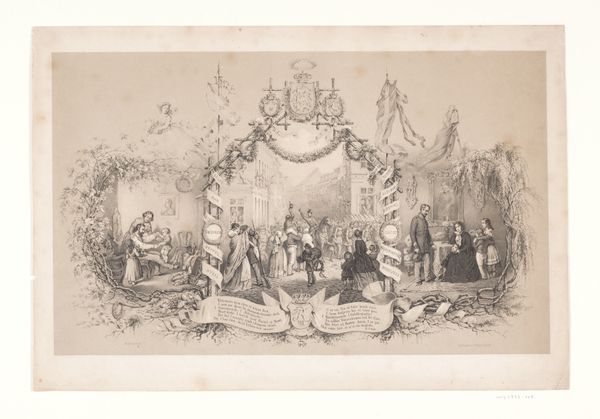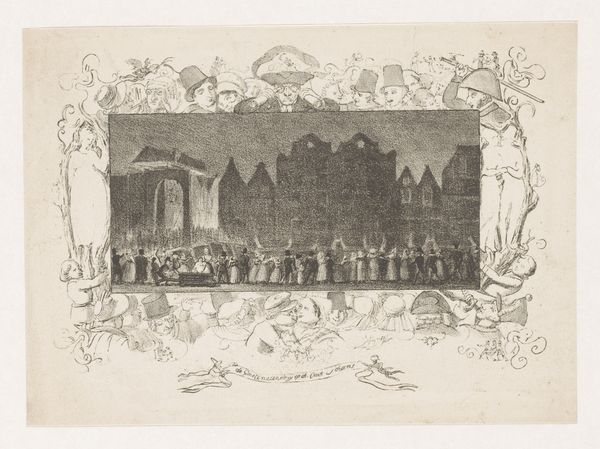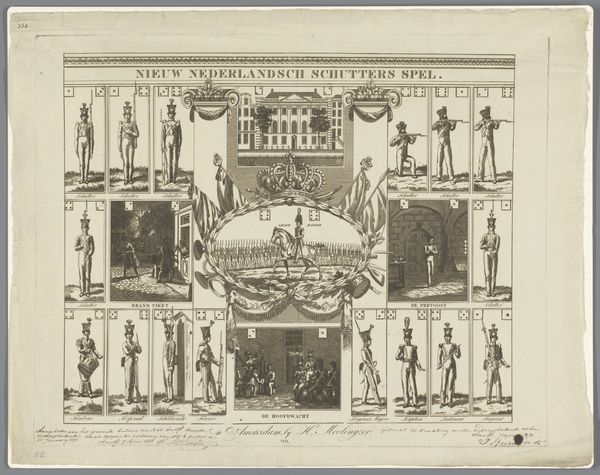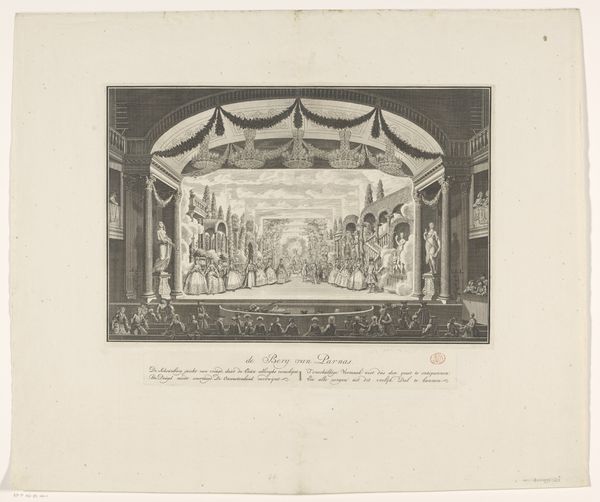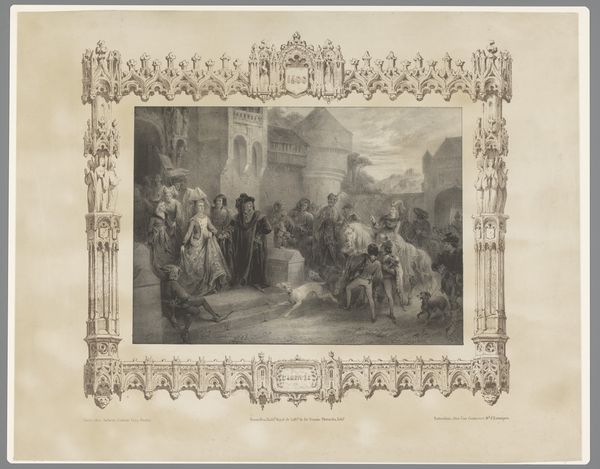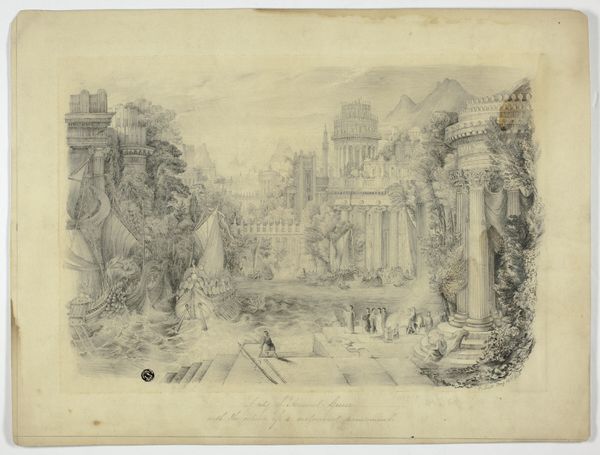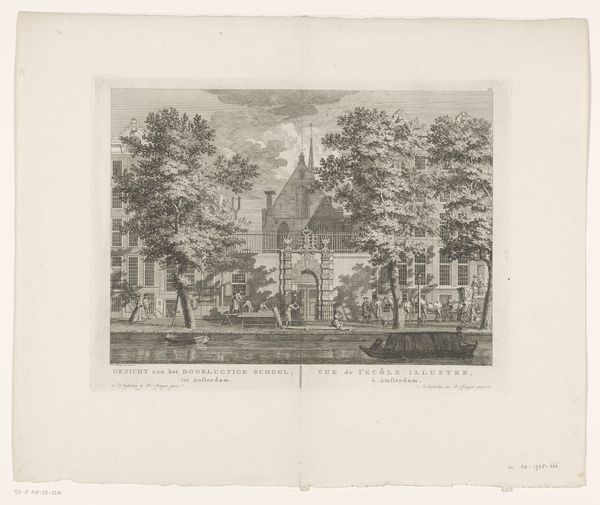
drawing, graphic-art, lithograph, print, paper, ink
#
drawing
#
graphic-art
#
narrative-art
#
lithograph
# print
#
paper
#
ink
#
cityscape
#
genre-painting
Dimensions: height 595 mm, width 750 mm
Copyright: Rijks Museum: Open Domain
Curator: This lithograph, appearing in the Leiden student almanac of 1873, presents quite the narrative snapshot. Immediately I notice the density of scenes— it’s almost overwhelming, yet intriguing. Editor: Indeed. The visual density definitely echoes the intensity of student life, juggling social, academic, and personal spheres. I’m curious about the artist’s choices in framing these vignettes; they feel very deliberate. Curator: Precisely! Look at how certain motifs recur: for example, the prominence of light—often lamplight—suggesting enlightenment, study, or perhaps even furtive, after-dark activities. Then there are the arches framing different areas. Editor: Right, arches as transitions or gateways. Symbolically, this highlights moving from one stage or activity to another; consider how each mini-scene seems almost staged or purposefully constructed. We move through implied time and space as our eyes navigate the lithograph, and student life itself became increasingly staged. These aren't candid captures; they present university existence in very organized ways, perhaps masking less pleasant realities. Curator: I think it reflects the perceived social expectations. Students were under tremendous pressure, and were often required to juggle financial difficulties with their studies. Some imagery, though presented casually, carries potent commentary: a gathering around what might be a clandestine billiards game implies risk and camaraderie—are they gambling or letting off steam? Or the homeless student on the lower left. It makes me think, too, about access and privilege within the student body itself. Editor: Interesting point about access. It reveals an undercurrent of social critique—poverty versus leisure, ambition versus reality—a complex duality that any socio-political setting presents. I can't help thinking this graphic piece reveals tensions lurking just beneath the surface. Curator: Ultimately, in analyzing these pictorial choices within this student publication, we see it did more than merely chronicle daily activities; it reflects societal forces, political and social climates and expectations projected onto, or enacted by, student life in 1873. Editor: Exactly. The lithograph’s many layers allow us to really engage with not just art but history and memory; and that’s where true understanding begins.
Comments
No comments
Be the first to comment and join the conversation on the ultimate creative platform.
